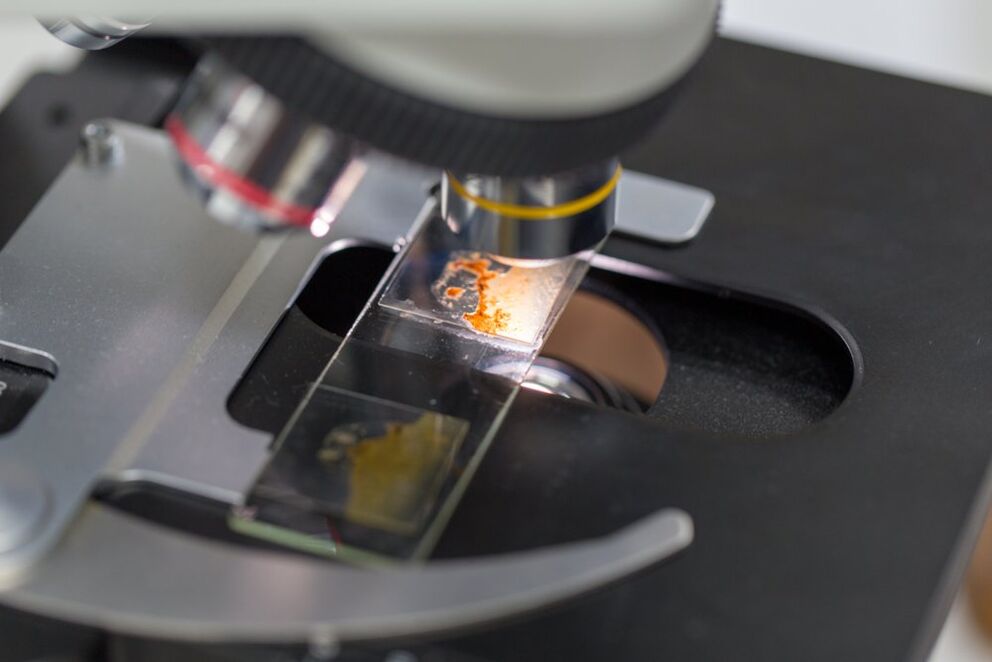Helminths are the oldest and most numerous inhabitants of our planet. It is known that they can live almost anywhere, and the human body is for many of them the optimal environment for life. There, the parasite is not only maximally protected from external influences, but can also get the nutrients needed for its growth and development. Not all helminthiasis has pronounced symptoms (like the same enterobiase): often a person does not even suspect that uninvited guests live in his body. How can a parasitic invasion be detected?
Why are helminths dangerous to the human body?

Despite the fact that helminths can live asymptomatically in the human body for a long time, this does not mean that their vital activity is safe. All parasites in the process of growth, development and death secrete certain substances that contribute to the sensitization of the body and the development of allergic reactions. Rash, itchy skin, and even anaphylactic shock can be caused by parasitic worms.
Also, many helminths are localized in the patient's gastrointestinal tract and disrupt the processes of normal digestion and absorption of nutrients. The patient notices the appearance of weakness, fatigue, dizziness and vertigo, which may be associated with the development of anemia. Brittle nails, hair, dry skin and mucous membranes can be the result of iron deficiency, hypovitaminosis and lack of mineral components. Against the background of chronic diarrhea, some patients develop dehydration and even increase the risk of hemorrhoids.
Many helminths have a mechanical effect on the wall of the gastrointestinal tract. Caterpillars and hooks injure tissues, which contributes to the formation of ulcerative and erosive changes. Cases of appendicitis in the background of helminthiasis are also known.
Who should be tested?
In fact, everyone is in danger. Almost all people eat meat or fish, vegetables, fruits and berries, as well as drink unboiled water and swim in tanks. Children are especially vulnerable in this regard: they most often have helminth eggs. Toddlers usually put dirty toys and any other objects in their mouths, cuddle with strays and domestic cats and dogs, and break the rules of personal hygiene. There are several types of analysis:
Preventive analyzes
Their goal is to detect parasitic worms in a timely manner, even in the absence of signs. It is recommended to undergo such an examination at least once a year.
Barrier analyzes
They aim to prevent the spread of helminthiasis among humans. When a child enters a preschool or goes to the pool, it is necessary to provide confirmation. Medical and nutritionists should also undergo a similar test.
According to the indications
If you suspect the development of helminthiasis (epidemiological history and specific complaints), the specialist prescribes a certain range of studies. This allows you to diagnose the disease in time and start treatment.
Analysis for helminth eggs
A fairly popular method for detecting helminth eggs is to study feces. In this case, no additional preparation is required: you simply have to collect the biological material in a special jar and take it to the laboratory. However, experts recommend not taking any antiparasitic drugs before taking the test: this can affect its accuracy. It is also worth noting that the analysis must be submitted at least 3 times to exclude false positive and false negative results. Today, the study of feces on helminth eggs is gradually giving way to newer methods - the determination of antibodies to a particular parasite in the blood.
How to detect enterobiasis?
Enterobiasis is one of the most common helminthiases, and pinworms cause it. The disease is often found in school children and kindergartens, but adults are also at risk of infection. The main symptom of the disease is severe itching in the perianal region. The diagnosis of enterobiasis is made by taking a smear or scraping from the area near the anus. This is due to the fact that the female pathogen leaves the intestines to lay eggs on the surface of the skin folds. The procedure is performed before going to the toilet and washing in the morning, which allows you to get an accurate result.
Diagnosis of ascariasis

Roundworms are helminths, whose body length can reach as much as 40 centimeters. They can travel through the body, affecting not only the gastrointestinal tract but also the lungs. Saliva and faecal samples can be used as research material: they contain the genetic material of the parasite. Also, ascaris eggs are often found in the patient's feces. However, the most effective diagnostic method is the detection of specific antibodies to parasitic worm antigens in the patient's blood.
How to recognize opisthorchiasis?
Feline fluke causes opisthorchiasis, which is characterized by predominantly liver damage. Therefore, opisthorchus eggs can be found not only in the feces, but also in the duodenal juice. In recent years, an enzyme-linked immunosorbent assay has been widely used to detect opisthorchiasis antibodies. Also, helminths can be detected by polymerase chain reaction, which is effective even with a small amount of biological material.
Identification of trichinosis
Trichinella is a helminth that mainly affects the muscles, but can migrate to the central nervous system, causing irreversible changes. If the development of this helminthiasis was suspected, a muscle biopsy was previously performed, but in recent years it has been replaced by serological methods. The reason for the diagnosis is the detection of antibodies to Trichinella in the patient's blood.
























